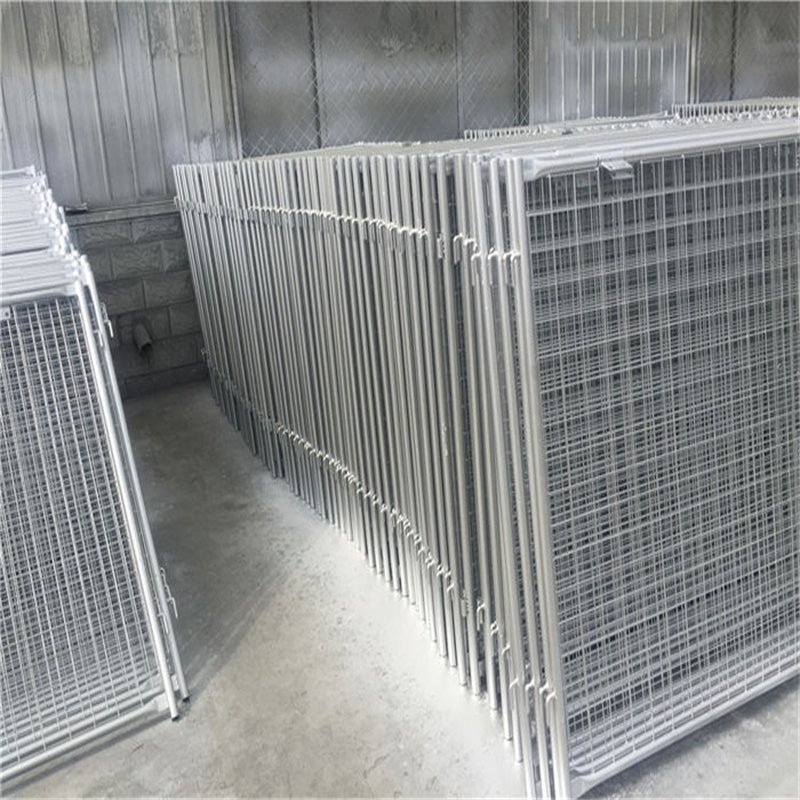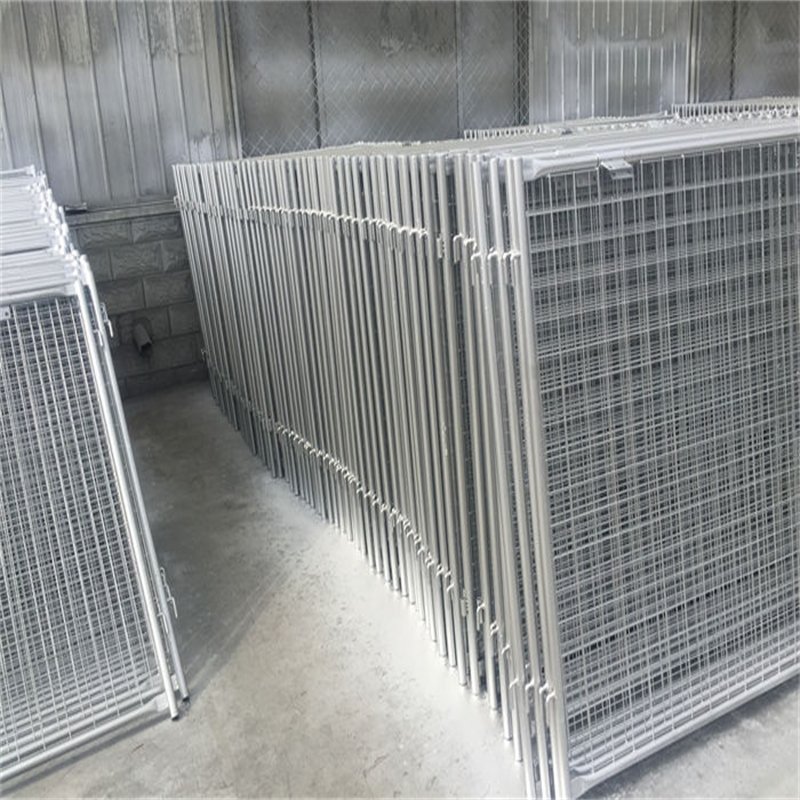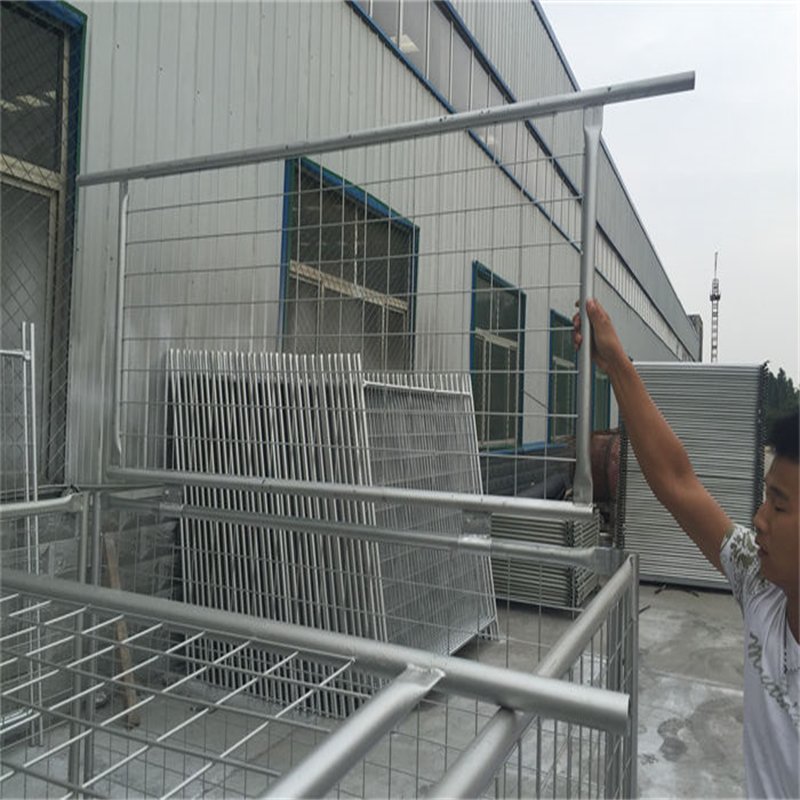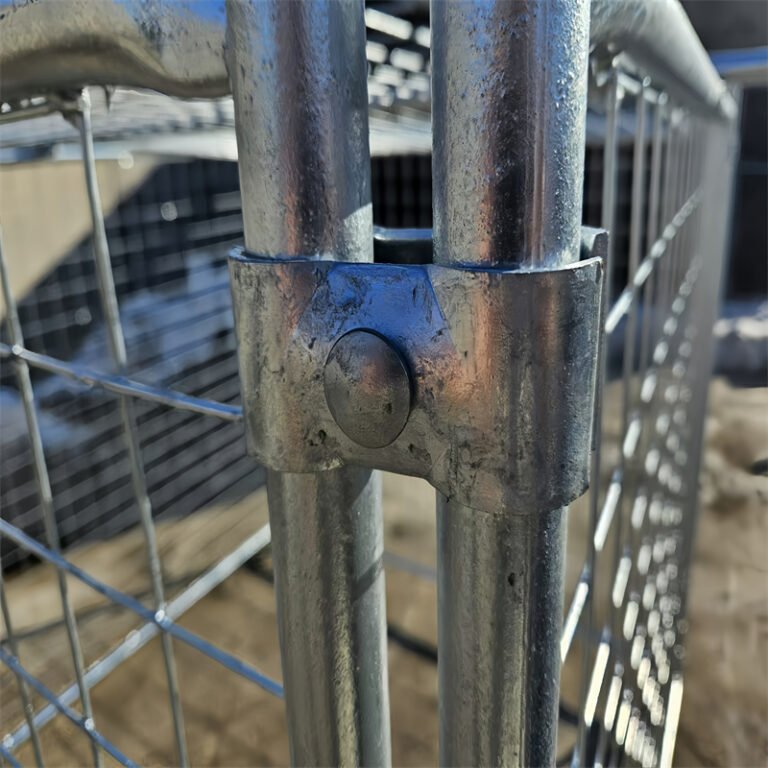Rubbish Cages: Quality, Durability, and Environmental
- Material:Steel
- Usage:Construction waste containment
- Features:Corrosion Resistance, Aging Resistance
- Main Markets:Australia, Canada, America, European Countries
- Sample:Free
- Size:1500mm High, 1800mm Long
- Mesh Opening:50x50mm
- Transport Package:Fence Panel in Bulk, Feet Packed on Steel Pallets
- Specification:1.5m x 1.8m
- Trademark:BMP
- Origin:China
- HS Code:73089000
- Minimum Order Quantity (MOQ):100 kits
- Price:$48.87 - $112.00 per kit
- Production Time:14-28 days for 200 kits
- Payment Term:Telegraphic Transfer (TT)
- Description
- Complied Standard
- State Regulations
- Gallary
Rubbish cages are sturdy, secure structures designed to hold and contain waste effectively. Unlike regular trash bins, these cages provide enhanced protection against animals, harsh weather, and unauthorized access. They are commonly used in various settings to keep environments clean and organized. Whether in urban parks, residential areas, commercial properties, or industrial sites, rubbish cages play a crucial role in managing waste responsibly and maintaining public hygiene.
 |
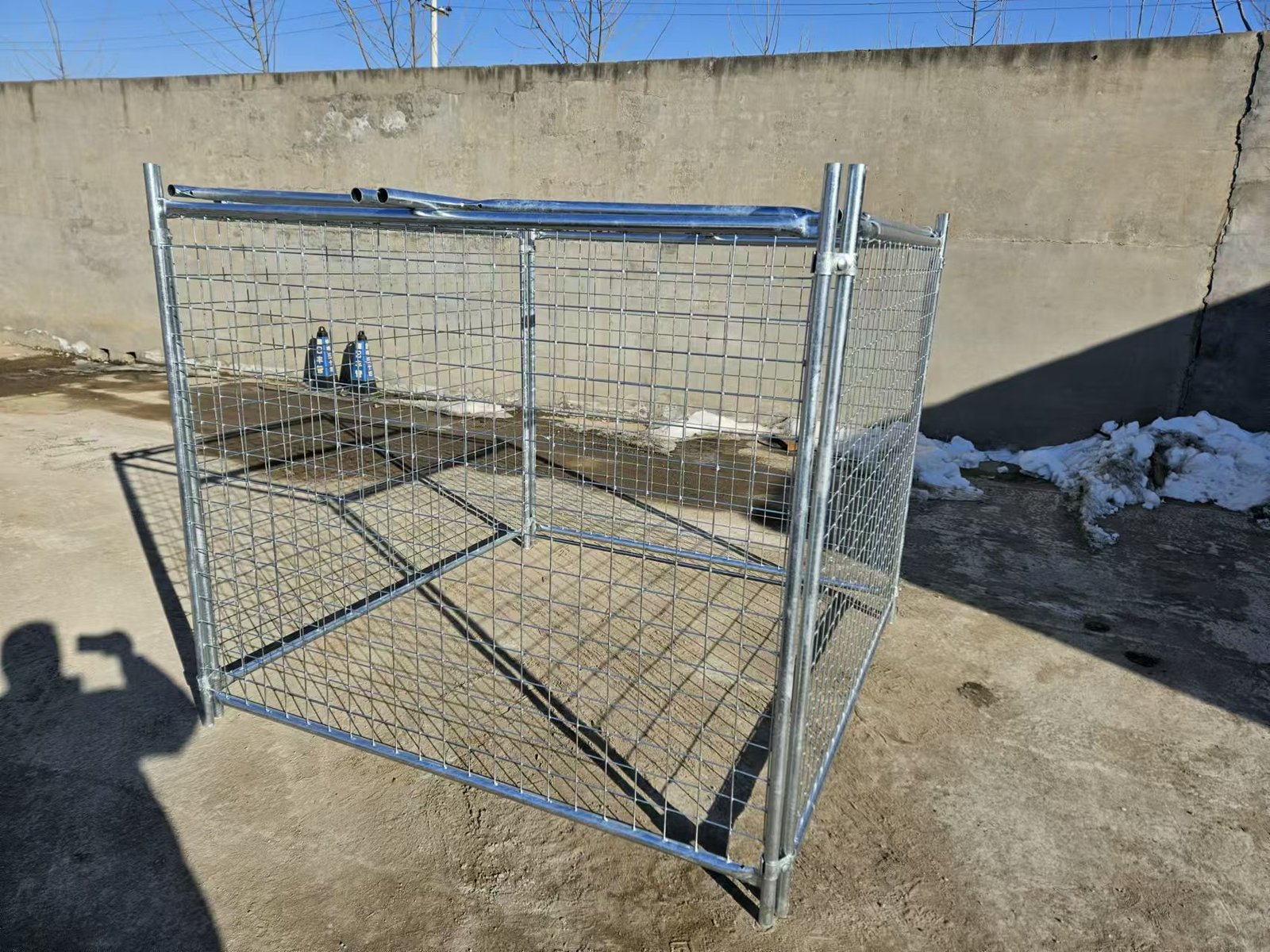 |
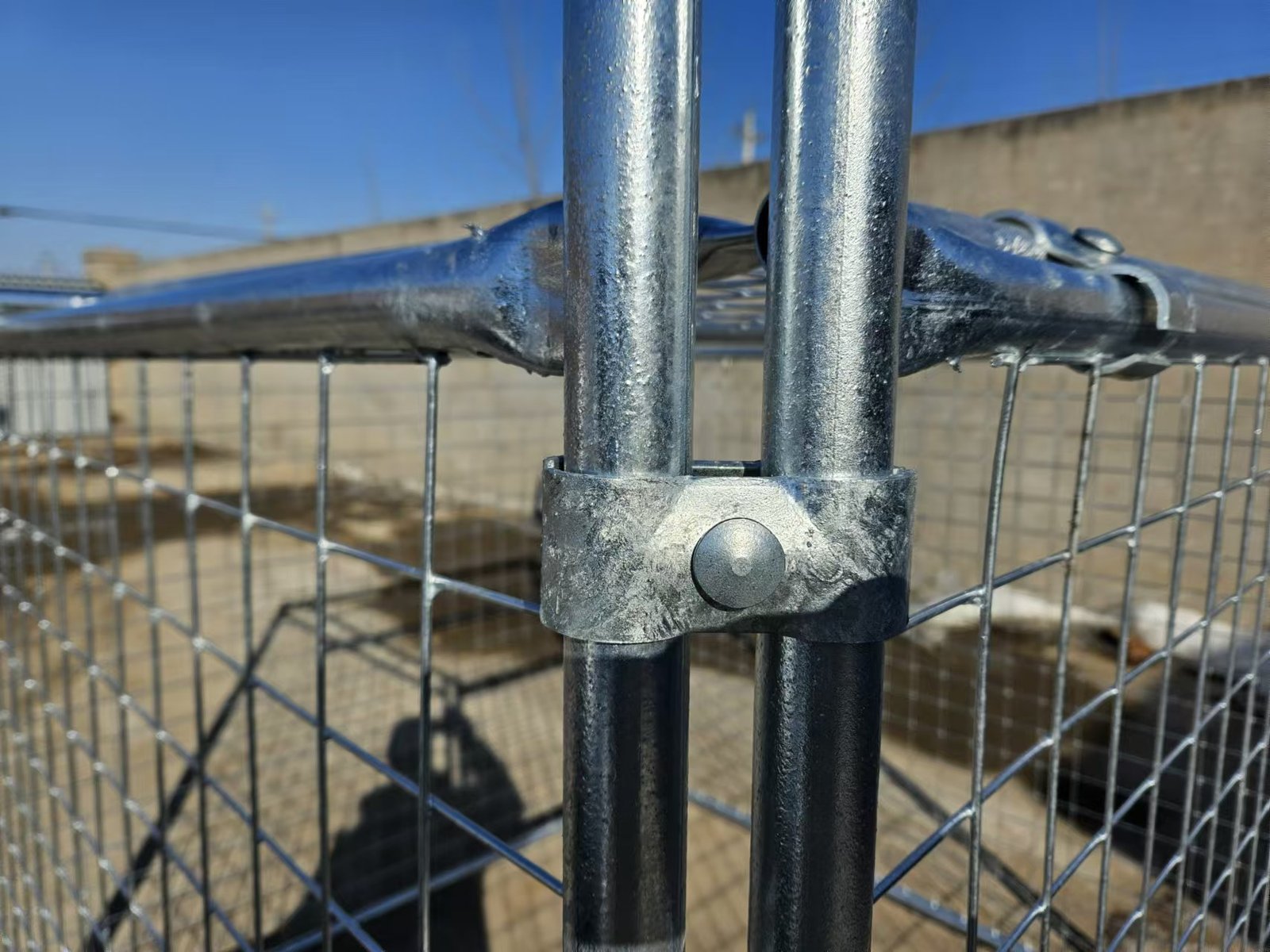 |
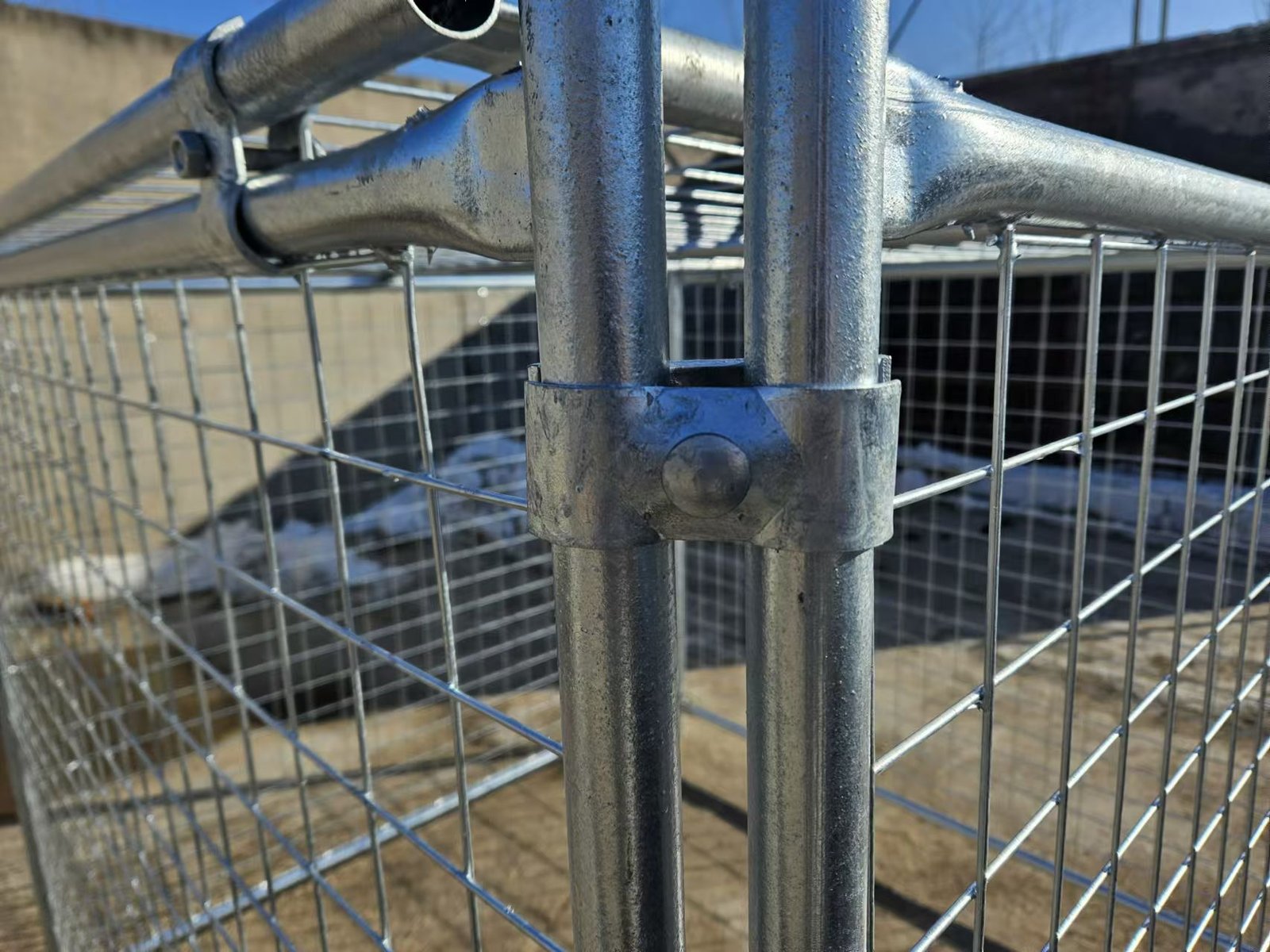 |
 |
 |
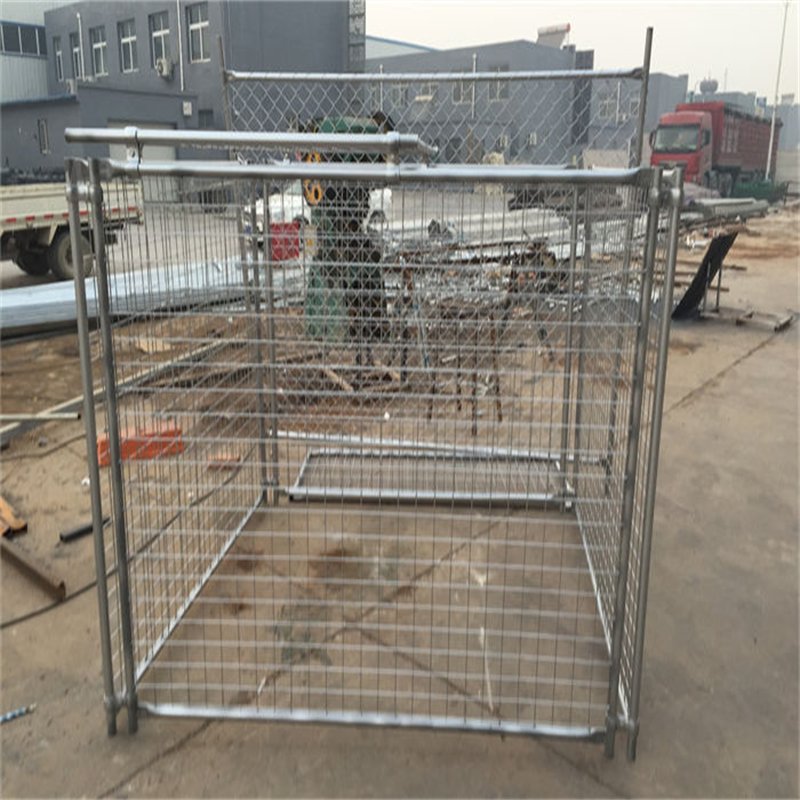
Rubbish cages with temporary fencing clamps |

Rubbish with male and female locking system |
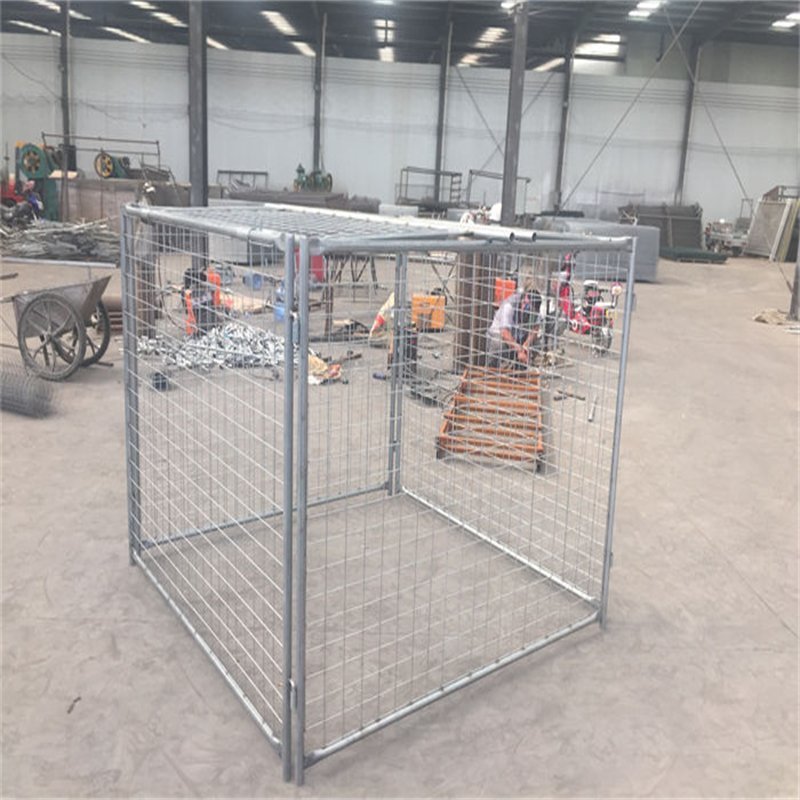
Assemble rubbish cages |

Rubbish cages with permanently clamps |
3.24m³ Rubbish Cage
| Specification | Details |
|---|---|
| Capacity | 3.24m³ |
| Frame (OD x Thickness) | OD32mm x 1.50mm or 2.00mm |
| Height | 1500mm |
| Width | 1200mm |
| Length | 1800mm |
| Mesh Aperture | 75mm x 75mm or 50mm x 50mm |
| Wire Diameter | 3.00mm / 4.00mm |
| Included Panels | 4 side panels + 2 lid panels |
| Lid Panel Size | 500mm x 2000mm |
| Treatment | Pre-galvanized or Hot-dipped Galvanized |
| Clamps | 4 Permanently or 4 Temporary Clamps |
Popular 4.86m³ Rubbish Cage
| Specification | Details |
|---|---|
| Capacity | 4.86m³ |
| Frame (OD x Thickness) | OD32mm x 1.50mm or 2.00mm |
| Height | 1500mm |
| Width | 1800mm |
| Length | 1800mm |
| Mesh Aperture | 75mm x 75mm or 50mm x 50mm |
| Wire Diameter | 3.00mm / 4.00mm |
| Included Panels | 4 side panels + 2 lid panels |
| Lid Panel Size | 825mm x 2000mm |
| Treatment | Pre-galvanized or Hot-dipped Galvanized |
| Clamps | 4 Permanently or 4 Temporary Clamps |
Standard 5.2m³ Rubbish Cage
| Specification | Details |
|---|---|
| Capacity | 5.2m³ |
| Frame (OD x Thickness) | OD32mm x 2.00mm |
| Height | 1600mm |
| Width | 1800mm |
| Length | 1800mm |
| Mesh Aperture | 75mm x 75mm or 50mm x 50mm |
| Wire Diameter | 4.00mm / 3.00mm |
| Included Panels | 4 side panels + 2 lid panels |
| Lid Panel Size | 825mm x 2000mm |
| Treatment | Pre-galvanized or Hot-dipped Galvanized |
| Clamps | 4 Permanently or 4 Temporary Clamps |
5.76m³ Rubbish Cage
| Specification | Details |
|---|---|
| Capacity | 5.76m³ |
| Frame (OD x Thickness) | OD32mm x 1.50mm or 2.00mm |
| Height | 1600mm |
| Width | 1800mm |
| Length | 2000mm |
| Mesh Aperture | 50mm x 50mm or 75mm x 75mm |
| Wire Diameter | 3.00mm / 4.00mm |
| Included Panels | 4 side panels + 2 lid panels |
| Lid Panel Size | 750mm x 2200mm |
| Treatment | Pre-galvanized or Hot-dipped Galvanized |
| Clamps | 4 Permanently or 4 Temporary Clamps |
12.00m³ Rubbish Cage
| Specification | Details |
|---|---|
| Capacity | 12.00m³ |
| Frame (OD x Thickness) | OD32mm x 1.50mm or 2.00mm |
| Height | 2100mm |
| Width | 2400mm |
| Length | 2400mm |
| Mesh Aperture | 75mm x 75mm or 50mm x 50mm |
| Wire Diameter | 3.00mm / 4.00mm |
| Included Panels | 4 side panels + 2 lid panels |
| Lid Panel Size | 1100mm x 2600mm |
| Treatment | Pre-galvanized or Hot-dipped Galvanized |
| Clamps | 4 Permanently or 4 Temporary Clamps |
Applications of Rubbish Cages
Rubbish cages are versatile and can be used in a wide range of environments. Here are some common applications:
- Residential Areas
- Apartment Complexes: Keeps trash contained, preventing litter and pests.
- Housing Estates: Maintains cleanliness in neighborhoods by securely holding waste.
- Public Spaces
- Parks and Recreational Areas: Reduces littering and keeps public spaces tidy.
- Beaches: Protects the natural beauty by containing waste and preventing it from scattering.
- Commercial Properties
- Shopping Centers: Manages large volumes of waste from shoppers efficiently.
- Office Buildings: Keeps office environments clean and free from overflowing trash.
- Industrial Sites
- Factories and Warehouses: Handles industrial waste securely, preventing contamination and environmental hazards.
- Construction Sites: Contains construction debris, keeping work areas safe and organized.
- Educational Institutions
- Schools and Universities: Promotes cleanliness and teaches students the importance of proper waste management.
- Libraries and Laboratories: Maintains a hygienic environment by securely holding waste.
- Event Venues
- Festivals and Concerts: Manages temporary waste generated during large gatherings.
- Sports Events: Keeps venues clean and organized by containing waste from attendees.
- Healthcare Facilities
- Hospitals and Clinics: Ensures medical and general waste is securely contained to maintain hygiene and safety.
 |
 |
 |
 |
Benefits of Rubbish Cages
Rubbish cages offer numerous advantages that make them an essential component of effective waste management systems:
-
Enhanced Security
- Prevents Unauthorized Access: Keeps waste secure from vandalism and tampering.
- Protects Against Animals: Stops wildlife from accessing and scattering trash, reducing the risk of pests and environmental contamination.
-
Durability and Longevity
- Robust Construction: Made from high-quality materials like galvanized steel, ensuring they withstand harsh weather and heavy use.
- Corrosion Resistance: Treatments like hot-dip galvanizing prevent rust, extending the lifespan of the cages, especially in coastal and humid areas.
-
Improved Cleanliness
- Reduces Littering: Secure containment encourages proper waste disposal, keeping public and residential areas cleaner.
- Minimizes Odors: Properly sealed cages help contain unpleasant smells, maintaining a pleasant environment.
-
Aesthetic Appeal
- Modern Designs: Available in various styles and colors to blend seamlessly with different environments, enhancing the visual appeal of public and private spaces.
- Customizable Options: Can be tailored to match the specific aesthetic requirements of different settings.
-
Environmental Protection
- Prevents Pollution: Keeps waste contained, preventing it from entering natural habitats, waterways, and public spaces.
- Promotes Recycling: Many rubbish cages are designed to facilitate proper waste segregation, encouraging recycling and composting.
-
Ease of Maintenance
- Simple Cleaning: Designed for easy access and cleaning, making maintenance straightforward and efficient.
- Low Upkeep: Durable materials reduce the need for frequent repairs and replacements, saving time and resources.
-
Cost-Effective
- Long-Term Savings: Durable construction and low maintenance needs result in long-term cost savings compared to standard trash bins.
- Efficient Waste Management: Helps optimize waste collection processes, reducing labor and transportation costs.
-
Accessibility
- User-Friendly Design: Ensures that waste disposal is easy for everyone, including maintenance crews, promoting effective waste management practices.
- Compliance with Accessibility Standards: Designed to meet guidelines that make them accessible to all users, including those with disabilities.
Conclusion Rubbish Cages
Rubbish cages are indispensable elements of effective waste management systems across Australia. Their robust construction and secure design not only contain and manage waste efficiently but also play a vital role in maintaining public hygiene and protecting the environment. By adhering to stringent Australian Standards and state-specific regulations, our rubbish cages ensure durability, safety, and environmental responsibility in every application.
Complied with Australian Standard
At BMP, we prioritize quality, durability, and environmental responsibility in every rubbish cage we manufacture. To ensure our products meet the highest industry standards and deliver exceptional performance, our rubbish cages fully comply with the following key Australian Standards:
a. AS/NZS 4680:2006 – Hot-Dip Galvanized (Zinc) Coatings on Fabricated Ferrous Articles
- Purpose: Ensures corrosion protection for metal components used in rubbish cages.
- Our Compliance: All steel parts undergo hot-dip galvanization as per AS/NZS 4680:2006. This process prevents rust and extends cage lifespan, ideal for coastal and humid environments.
b. AS 4100:2020 – Steel Structures Rubbish Cage
- Purpose: Provides guidelines for the design, fabrication, and erection of steel structures.
- Our Compliance: We adhere to AS 4100:2020 in designing and fabricating our rubbish cages. This ensures the structural framework is robust and withstands environmental stresses, including high winds and heavy loads.
 |
 |
 |
 |
c. AS/NZS 1170.2:2021 – Structural Design Actions Part 2: Wind Actions
- Purpose: Specifies the wind load requirements for structures.
- Our Compliance: Our rubbish cages resist wind pressures specific to various Australian locations by complying with AS/NZS 1170.2:2021. This ensures integrity during adverse weather conditions.
d. AS 4506:2005 – Metal Finishing – Thermoset Powder Coatings Rubbish Cage
- Purpose: Governs the application of durable and weather-resistant coatings.
- Our Compliance: We follow AS 4506:2005 for applying thermoset powder coatings on our rubbish cages. This ensures excellent adhesion, hardness, and resistance to chipping and UV degradation.
e. AS/NZS 2047:2020 – Steel Pallets for Handling, Transport and Storage of Goods
- Purpose: Primarily for pallets, aspects of this standard apply to the transport and handling of rubbish cages.
- Our Compliance: Our rubbish cages are designed to facilitate safe and efficient transportation and storage, adhering to relevant aspects of AS/NZS 2047:2020. This minimizes damage during transit and maintains structural integrity until installation.
f. AS/NZS 4200.1:2013 – Structural Steelwork – Welding – General Requirements
- Purpose: Sets the standards for welding practices in structural steelwork.
- Our Compliance: All welding processes in our rubbish cages comply with AS/NZS 4200.1:2013. This ensures welds meet stringent safety and quality requirements, preventing structural weaknesses.
g. AS 1428.1:2021 – Design for Access and Mobility
- Purpose: Provides guidelines to ensure accessibility for all users.
- Our Compliance: Our rubbish cages are designed to be accessible for waste disposal by the public and maintenance crews, in line with AS 1428.1:2021. We consider height and ease of use to ensure our products are user-friendly and inclusive.
Why Compliance Matters
Compliance with these Australian Standards demonstrates our unwavering commitment to delivering rubbish cages that are functional, durable, safe, and environmentally responsible. By adhering to these rigorous standards, we ensure that our products:
- Enhance Longevity: Corrosion-resistant materials and robust structural design ensure our cages last in diverse conditions.
- Ensure Safety: High-quality welding and secure locking mechanisms prevent structural failures and unauthorized access.
- Promote Sustainability: We use recyclable materials and sustainable manufacturing practices, aligning with Australia’s environmental conservation goals.
- Facilitate Accessibility: Thoughtful design ensures our rubbish cages are easy to use for everyone, promoting effective waste management and community cleanliness.
Our Assurance
At BMP, we take pride in our meticulous adherence to these standards. Every rubbish cage we produce meets and exceeds industry expectations. Our dedication to quality control, sustainable practices, and customer satisfaction makes us a trusted partner in effective waste management solutions across Australia.
State-Specific Standards and Regulations
Australia does not have a single national standard specifically for rubbish cages. Instead, waste management and the regulations surrounding rubbish cages are primarily governed by state and local governments. These regulations ensure that waste containment solutions meet environmental, safety, and public health standards. Common aspects addressed by these standards include materials, design, placement, and maintenance of rubbish cages.
a. New South Wales (NSW)
Regulatory Body: NSW Environment Protection Authority (EPA)
- Design and Construction:
- Rubbish cages must be constructed from durable, weather-resistant materials such as galvanized steel or high-density polyethylene (HDPE).
- Designs should prevent access by wildlife to minimize scavenging and litter scattering.
- Placement:
- Placement should facilitate easy access for waste disposal and collection services while minimizing obstruction in public spaces.
- Must comply with local council zoning regulations regarding placement in parks, streets, and commercial areas.
- Maintenance:
- Regular maintenance schedules must be established to ensure cleanliness and functionality.
- Any damage or wear should be promptly repaired to maintain containment integrity.
Key Regulation: Waste Avoidance and Resource Recovery Act 2001 (NSW)
b. Victoria
Regulatory Body: Environment Protection Authority Victoria (EPA Victoria)
- Design and Construction:
- Rubbish cages must adhere to standards that prevent pest ingress and ensure structural stability.
- Use of non-toxic, recyclable materials is encouraged to support sustainability goals.
- Placement:
- Must be strategically placed to optimize waste collection efficiency and reduce littering.
- Compliance with local municipal guidelines is mandatory, particularly in high-traffic areas.
- Maintenance:
- Regular inspections and cleaning are required to prevent odor buildup and pest attraction.
- Maintenance records should be kept to demonstrate compliance with environmental standards.
Key Regulation: Environment Protection Act 2017 (Victoria)
c. Queensland
Regulatory Body: Queensland Department of Environment and Science
- Design and Construction:
- Rubbish cages should be robust and secure, typically featuring locking mechanisms to deter unauthorized access.
- Materials used must withstand Queensland’s humid and coastal climates to prevent corrosion and degradation.
- Placement:
- Must align with local council waste management plans and environmental protection guidelines.
- Consideration of accessibility for waste collection vehicles is essential to ensure efficient operations.
- Maintenance:
- Implement regular maintenance protocols to ensure ongoing compliance with environmental standards.
- Promptly address any issues such as leaks or structural damage to maintain waste containment efficacy.
Key Regulation: Waste Reduction and Recycling Act 2011 (Queensland)
d. Western Australia
Regulatory Body: Department of Water and Environmental Regulation (DWER)
- Design and Construction:
- Rubbish cages must be designed to prevent environmental contamination and minimize visual impact in public spaces.
- Use of materials that are easy to clean and resistant to wear is mandatory.
- Placement:
- Must comply with local government regulations regarding placement in residential, commercial, and public areas.
- Strategic placement to avoid clutter and ensure aesthetic harmony with surroundings.
- Maintenance:
- Regular maintenance and cleaning schedules must be established to uphold hygiene and functionality.
- Any modifications or repairs must meet DWER guidelines to ensure continued compliance.
Key Regulation: Waste Avoidance and Resource Recovery Act 2007 (WA)
e. South Australia
Regulatory Body: Environment Protection Authority South Australia (EPA SA)
- Design and Construction:
- Must utilize materials that prevent pest access and are durable against South Australia’s varying climate conditions.
- Designs should facilitate easy waste disposal and collection while minimizing environmental impact.
- Placement:
- Rubbish cages must be placed in accordance with local council regulations, ensuring they do not obstruct public pathways or access points.
- Consideration of proximity to waste collection services to enhance efficiency.
- Maintenance:
- Establish regular maintenance routines to ensure cleanliness and prevent pest infestations.
- Compliance with EPA SA guidelines for waste containment and environmental protection must be maintained.
Key Regulation: Environment Protection (Waste) Regulations 2016 (SA)
f. Tasmania
Regulatory Body: Tasmanian Environment Protection Authority (EPA Tasmania)
- Design and Construction:
- Rubbish cages should be constructed from materials that resist Tasmania’s moist climate and prevent wildlife access.
- Designs must ensure ease of use for waste disposal while maintaining security and containment.
- Placement:
- Must adhere to local council guidelines regarding placement in residential, commercial, and public areas.
- Strategic placement to optimize waste collection routes and minimize environmental impact.
- Maintenance:
- Regular inspections and cleaning are required to maintain hygiene standards and functionality.
- Any repairs or upgrades must comply with EPA Tasmania’s standards to ensure ongoing compliance.
Key Regulation: Waste Management and Resource Recovery Act 1991 (Tasmania)
g. Australian Capital Territory (ACT)
Regulatory Body: Environment, Planning and Sustainable Development Directorate (EPSDD)
- Design and Construction:
- Must use durable, weather-resistant materials that prevent unauthorized access and minimize litter dispersion.
- Designs should integrate seamlessly with the surrounding environment to maintain aesthetic standards.
- Placement:
- Compliance with ACT local government regulations for placement in various zones, including residential, commercial, and public areas.
- Ensure accessibility for waste collection services while avoiding obstruction of public pathways.
- Maintenance:
- Implement regular maintenance and cleaning schedules to ensure ongoing functionality and hygiene.
- Address any structural issues promptly to maintain containment integrity and environmental compliance.
Key Regulation: Waste Management Act 2003 (ACT)
3. Common Requirements Across States
Despite the variations in regulations, several common requirements exist across Australian states for rubbish cages:
- Material Durability: Rubbish cages must be made from sturdy, weather-resistant materials such as galvanized steel, stainless steel, or high-density polyethylene (HDPE) to ensure longevity and minimal maintenance.
- Pest Prevention: Designs should prevent access by wildlife and pests to minimize waste scattering and contamination.
- Ease of Access: Rubbish cages must allow easy access for both waste disposal by the public and collection by waste management services.
- Aesthetic Considerations: Especially in public and residential areas, the design and color of rubbish cages should blend with the surrounding environment to maintain visual appeal.
- Safety Standards: Rubbish cages should be designed to prevent injuries, featuring smooth edges, secure locking mechanisms, and stability to withstand environmental factors like wind.
- Environmental Protection: Must comply with environmental regulations to prevent contamination, odour issues, and ensure sustainable waste management practices.
4. Key Differences Between States
While the foundational principles remain consistent, key differences between states often pertain to:
- Regulatory Bodies: Each state has its own governing body responsible for enforcing waste management standards, leading to variations in specific requirements and compliance procedures.
- Climate Considerations: States with coastal or humid climates (e.g., Queensland, NSW) may have stricter corrosion-resistant material requirements compared to drier regions.
- Local Council Regulations: Within states, local municipalities may impose additional regulations regarding the placement, size, and design of rubbish cages to address specific community needs and environmental conditions.
- Waste Management Policies: States may have differing priorities in their waste management policies, influencing the design and functionality requirements of rubbish cages (e.g., emphasis on recycling, composting, etc.).
 |
 |
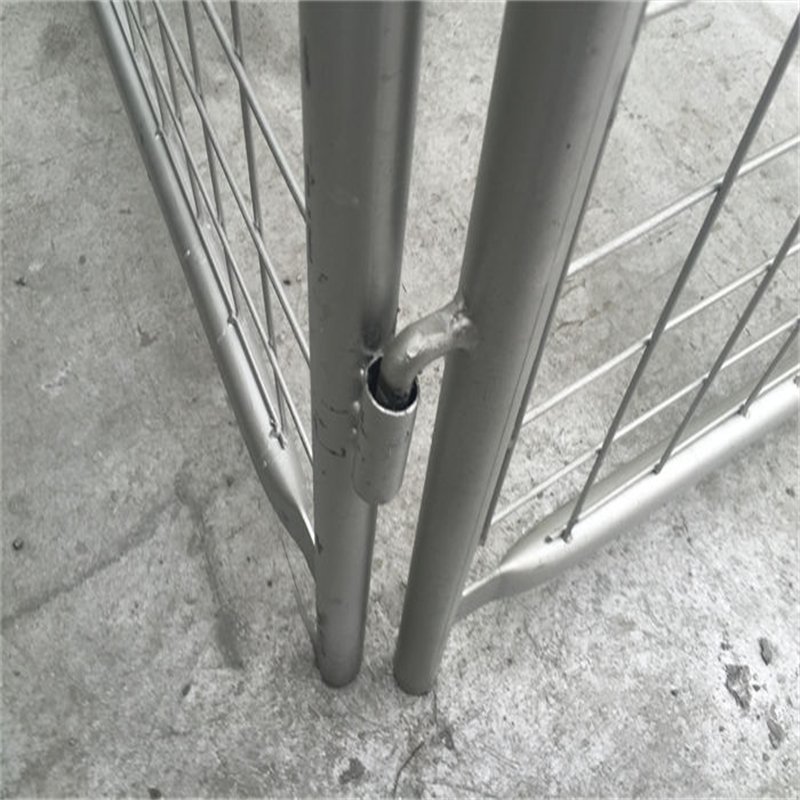 |
 |
5. Best Practices for Compliance
To ensure that rubbish cages comply with state-specific standards and contribute effectively to waste management goals, consider the following best practices:
- Consult Local Regulations: Always refer to the specific regulations and guidelines provided by state and local authorities before installing rubbish cages.
- Choose Durable Materials: Invest in high-quality, weather-resistant materials to reduce maintenance needs and extend the lifespan of rubbish cages.
- Design for Accessibility and Security: Ensure that rubbish cages are easily accessible for waste disposal and collection while being secure enough to prevent unauthorized access and litter scattering.
- Implement Regular Maintenance: Establish routine maintenance schedules to keep rubbish cages clean, functional, and in compliance with environmental standards.
- Engage with the Community: Educate the public on proper waste disposal practices and the importance of using rubbish cages to maintain cleanliness and environmental integrity.
6. Conclusion
Rubbish cages are essential components of effective waste management systems across Australia, helping to contain waste, prevent littering, and protect the environment. Understanding and adhering to state-specific standards and regulations is crucial for ensuring that these structures are both functional and compliant. By selecting appropriate materials, designing for accessibility and security, and maintaining regular upkeep, communities can enhance their waste management efforts and contribute to a cleaner, healthier environment.
For detailed and up-to-date information, always refer to the respective state’s environmental protection authority or local council guidelines.
Resources for Further Information:
- NSW Environment Protection Authority (EPA NSW): https://www.epa.nsw.gov.au
- EPA Victoria: https://www.epa.vic.gov.au
- Queensland Department of Environment and Science: https://www.qld.gov.au/environment
- Western Australia Department of Water and Environmental Regulation (DWER): https://www.dwer.wa.gov.au
- EPA South Australia: https://www.epa.sa.gov.au
- EPA Tasmania: https://www.epa.tas.gov.au
- ACT Environment, Planning and Sustainable Development Directorate (EPSDD): https://www.environment.act.gov.au
A Gallery section for rubbish cages can offer a comprehensive visual overview of the product, showcasing its design, structure, and application across various sites
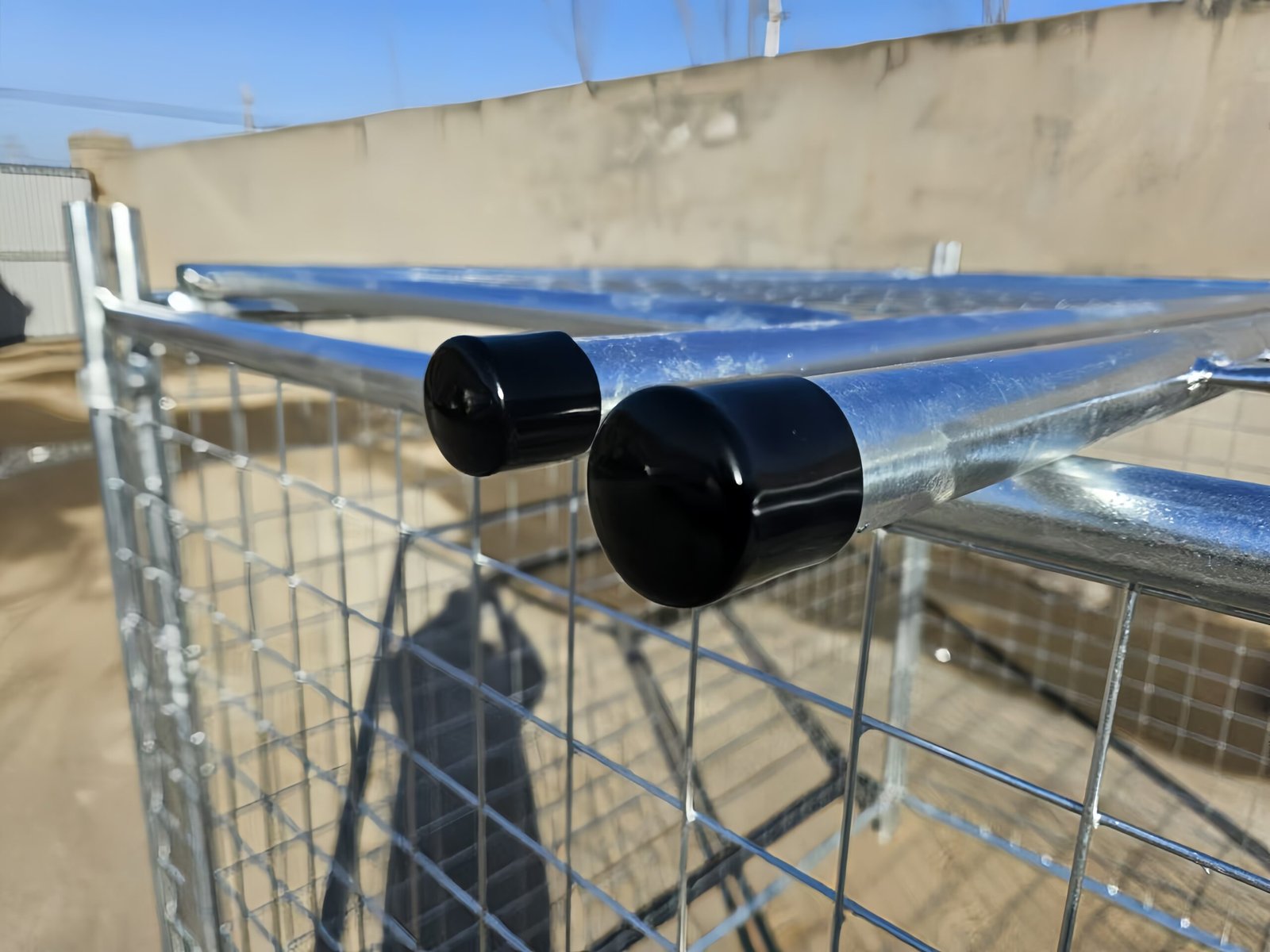 |
 |
 |
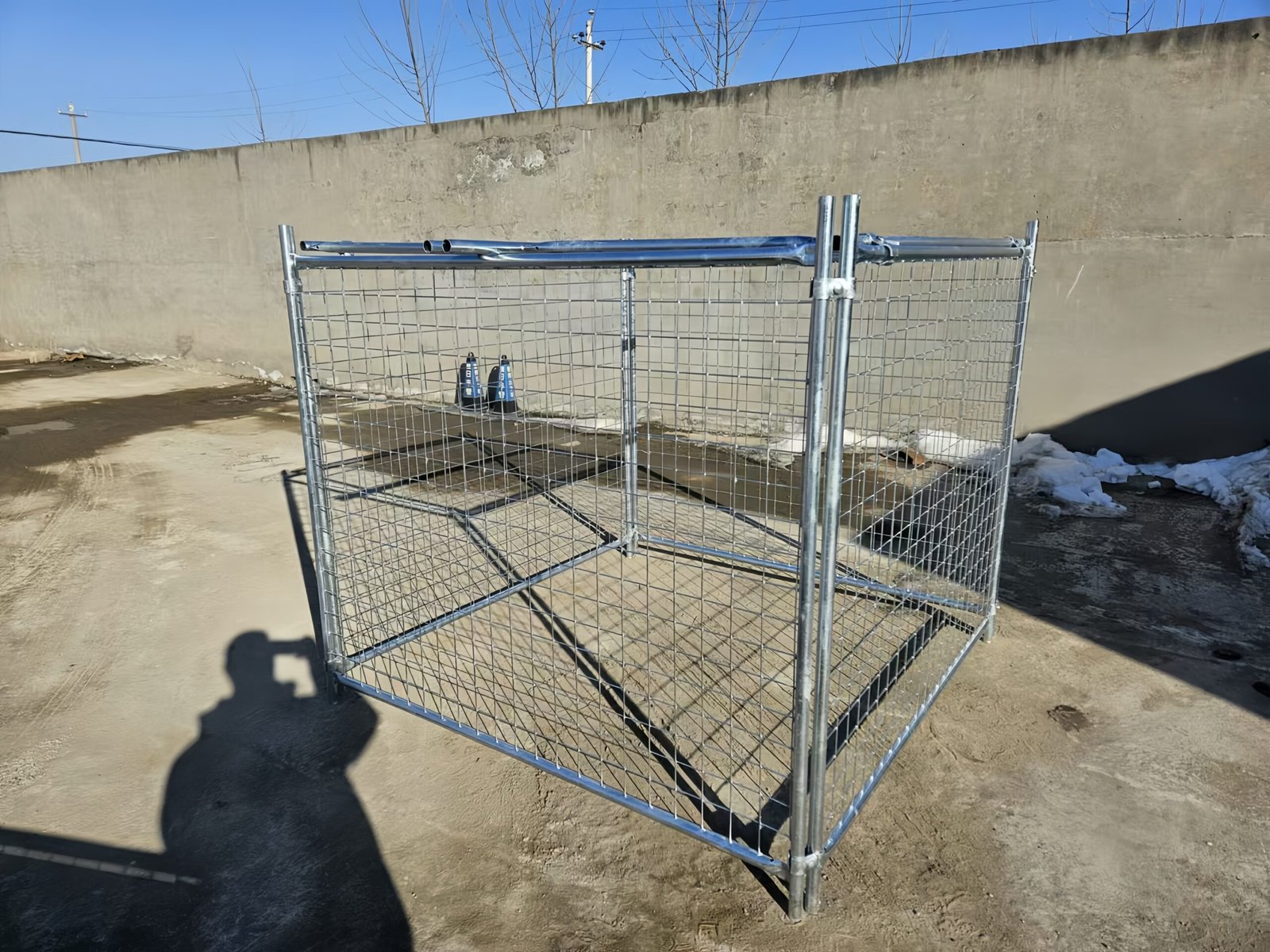 |
 |
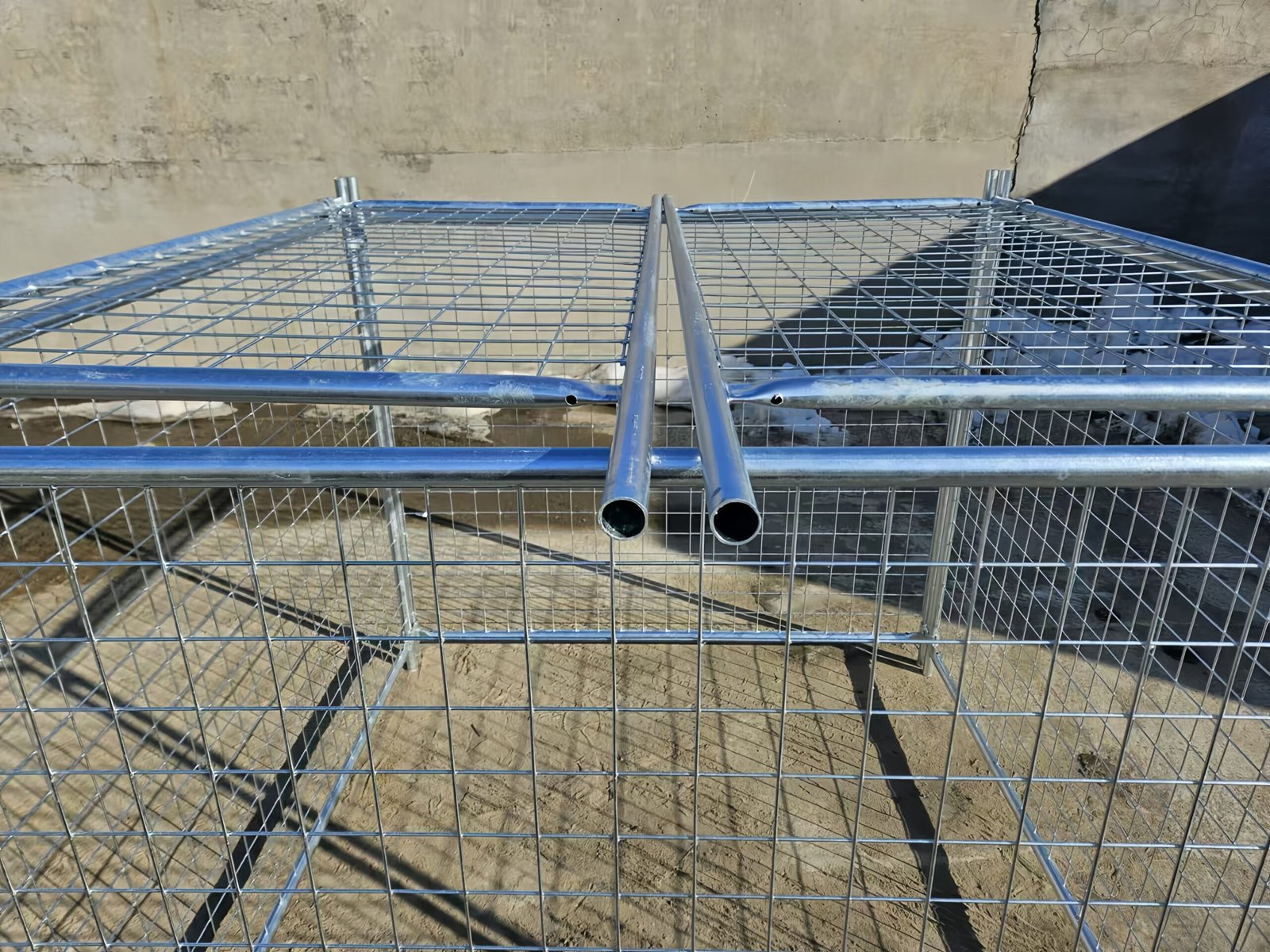 |
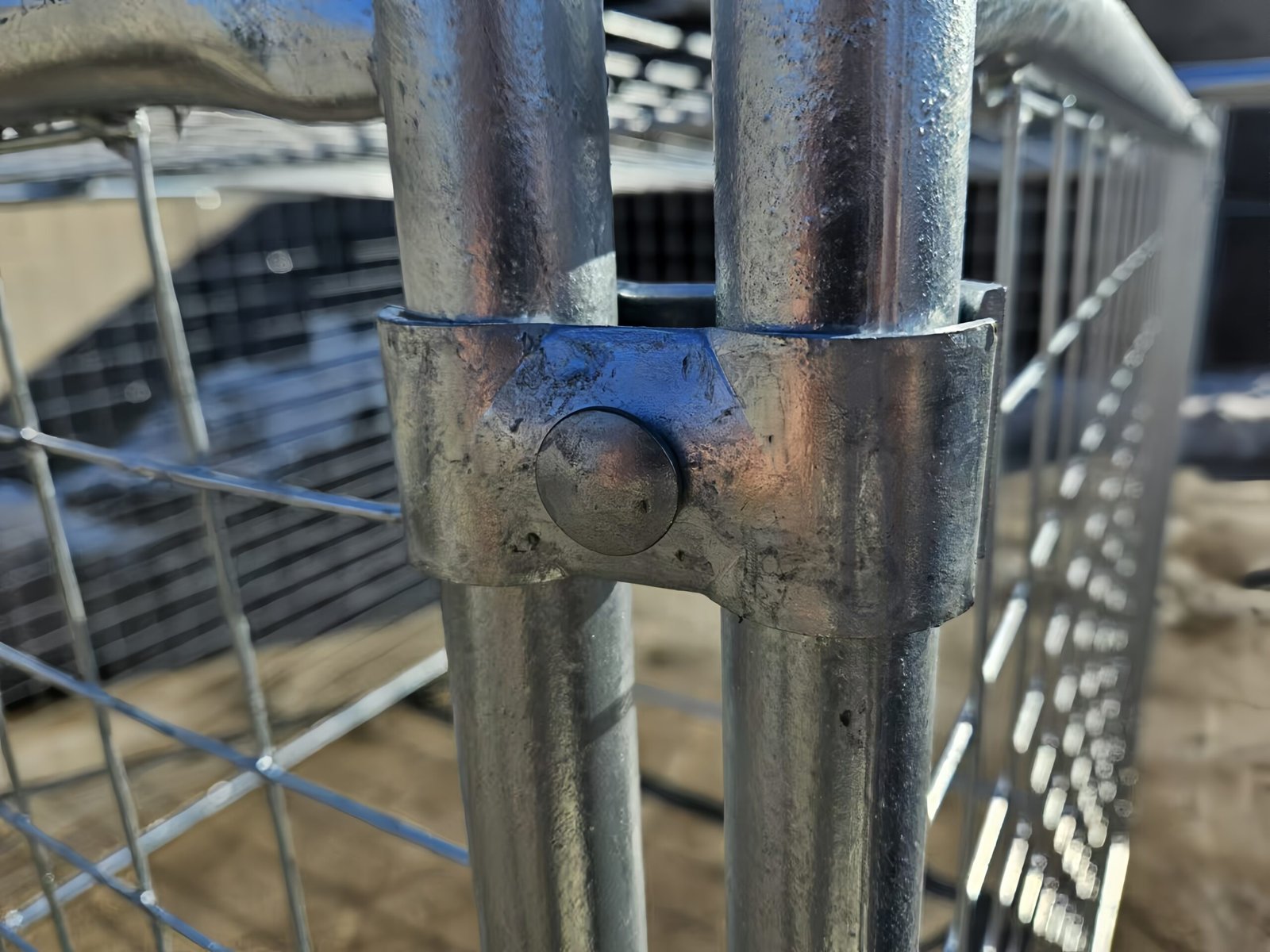 |
 |
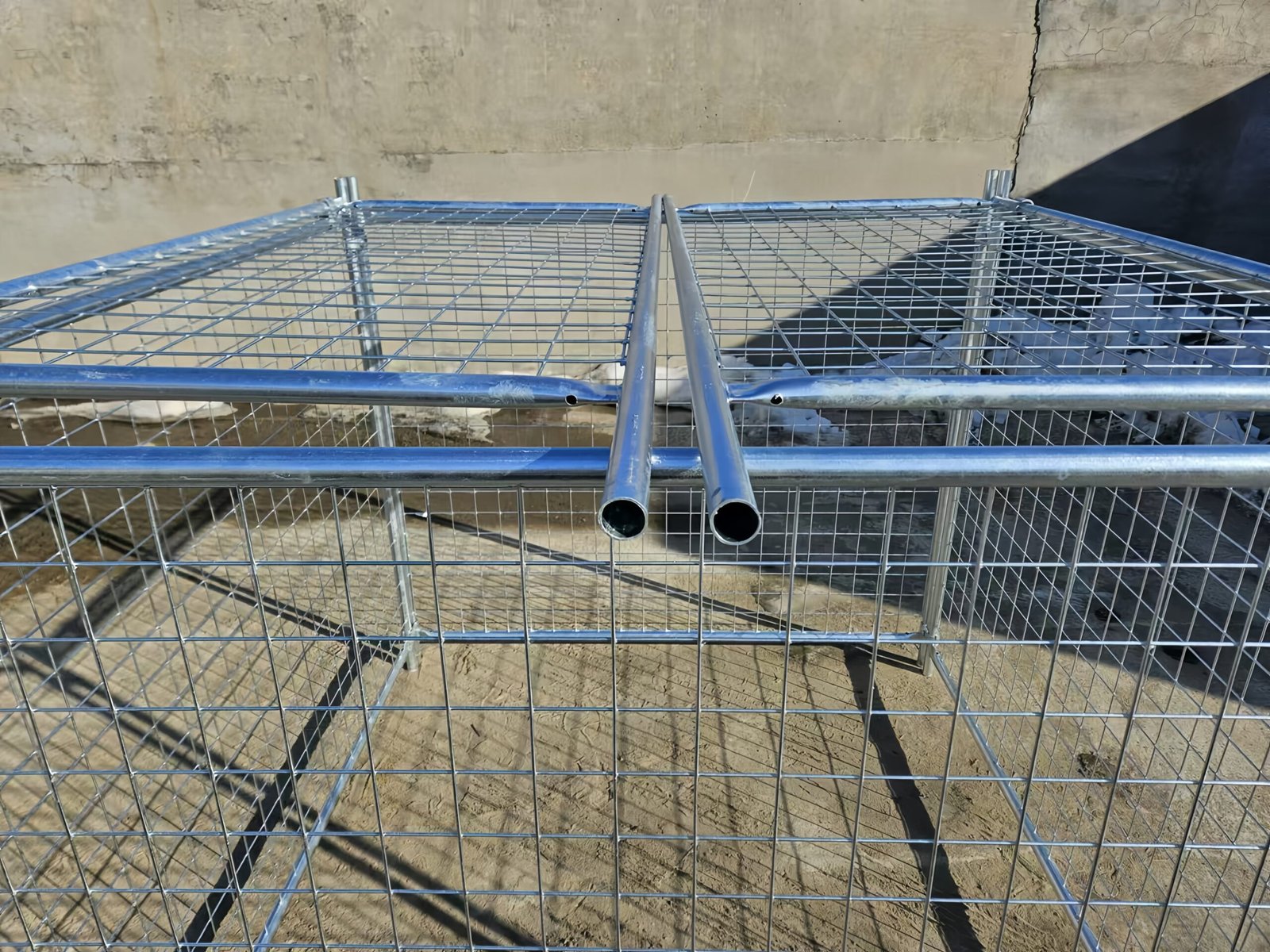 |
 |
Rubbish Cages builders rubbish cage, rubbish bin cage, rubbish cage, rubbish cage for sale, rubbish cage hire, rubbish cages for sale

